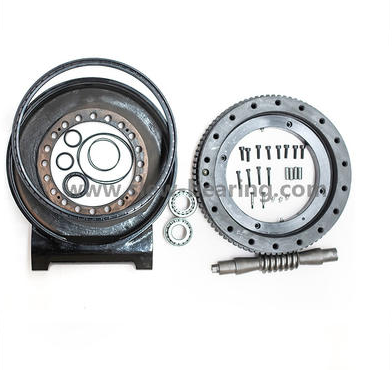Views: 16 Author: Site Editor Publish Time: 2020-10-08 Origin: Site








In the current energy crisis, photovoltaic power generation technology and industry have developed rapidly. Although the key technologies of photovoltaic power generation systems are maturing, the problems of high cost and low efficiency still restrict their extensive development and application. Therefore, how to maximize the efficiency of the photovoltaic system is the key issue. The solar slewing drive is designed to rotate the solar photovoltaic panels and improve the power generation efficiency. Provide single-axis and dual-axis solar tracking solutions. In order to improve the power generation efficiency of the photovoltaic power generation system, technical means such as improving the photoelectric conversion efficiency, increasing the effective receiving area of the light panel and the maximum power point tracking technology can be adopted. This article describes these three methods in detail.
· Photoelectric conversion efficiency
· Increase the effective receiving area of the light board
· Maximum power point tracking
The photoelectric conversion efficiency refers to: under standard conditions, the ratio of electrical power generated per unit area to solar radiation power.
Photovoltaic cells are classified into crystalline silicon cells and thin-film cells from the production materials. The photoelectric conversion rate of gallium arsenide thin-film batteries is more than 20%, but it cannot be widely used because of its high manufacturing cost and few resources. The conversion efficiency of polysilicon is more than ten percent, but because of its low cost and low manufacturing pollution, it is used in the market with the highest rate
There are several measures to improve the photoelectric conversion efficiency of photovoltaic cells:
(1) Looking for new materials for photoelectric conversion
(2) Adopt new processing technology to manufacture solar cells
(3) Use condensing optical elements.

At present, the most commonly used method to increase the effective area of the light board is light intensity tracking technology. It adjusts the relative angle between the solar panel and the sunlight, so that the solar panel keeps a vertical angle with the sunlight at all times, thereby improving the power generation efficiency of the solar panel.
The automatic tracking system can be divided into single-axis tracking system and dual-axis tracking system. The structure of different types of tracking systems is different, and compared with the fixed panel, the improved efficiency is also different.
Maximum power point tracking means that the voltage of the solar photovoltaic array can be detected in real time, so that its working voltage can always be maintained at the voltage value at the time of the maximum power value. The ultimate goal to be achieved is to allow the photovoltaic array to output the most electrical energy. The maximum power point is mainly affected by the external environment such as temperature and light intensity. When the temperature remains unchanged, with the continuous increase of light intensity, the open circuit voltage of the photovoltaic cell is basically unchanged, but the increase in short-circuit current will be obvious, and the maximum output power will increase. When the light intensity is stable, as the temperature increases, the open circuit voltage of the photovoltaic cell decreases accordingly, so the output power will decrease.
At present, there are several maximum power point tracking methods, and the most representative basic methods are: fixed voltage method, disturbance observation method, conductance increment method, etc.
Home | About Us | Products | News | Application | Support | Contact Us


